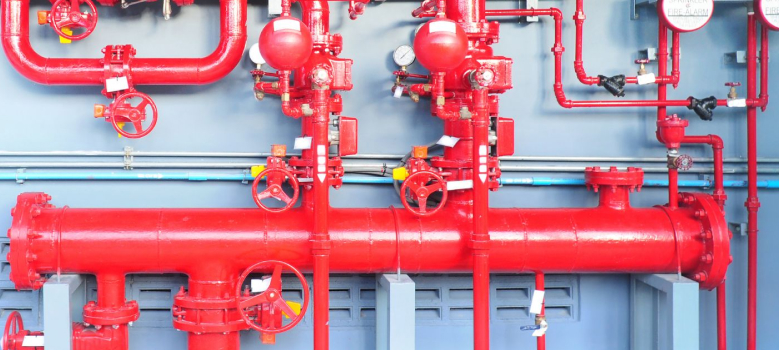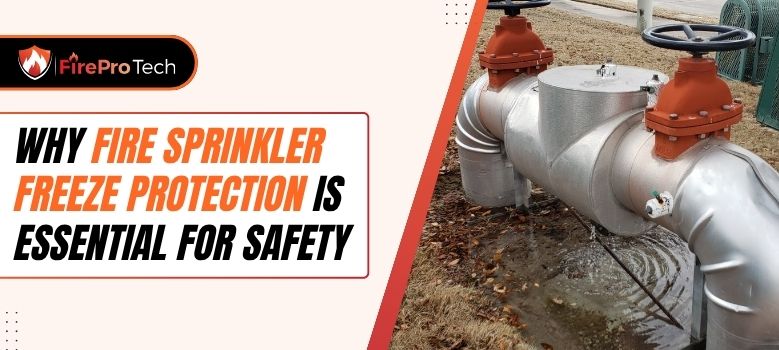
Right fire sprinkler systems are one of the most effective and reliable ways to protect your property and your people from fire hazards. However, not all sprinkler systems are the same, and choosing the right one for your needs can be a challenging task. In this blog post, we will help you understand the diverse types of fire protection systems, their advantages and disadvantages, and how to choose the best one for your situation.
Fire sprinkler systems are systems that automatically detect and suppress fires by spraying water or other extinguishing agents on the fire. Sprinkler systems consist of three main components: a water supply, a network of pipes, and sprinkler heads. The water supply provides the water or other extinguishing agents to the system. The network of pipes distributes the water or other agents to the sprinkler heads. The sprinkler heads are devices that are triggered by heat or smoke and spray water or other agent on the fire.
There are four main types of fire sprinkler systems: wet pipe, dry pipe, pre-action, and deluge. Each type has its own characteristics, advantages, and disadvantages, depending on the type of fire hazard, the type of building, and the environmental conditions.
Wet pipe fire sprinkler systems are the most common and simplest of the lot. In wet pipe systems, the pipes are always filled with water, and the sprinkler heads are individually activated by heat. When a fire occurs, the heat melts a fusible link or a glass bulb in the sprinkler head, releasing the water onto the fire. Wet pipe systems are easy to install, maintain and operate, and they provide a quick and effective response to fire. However, wet pipe systems are not suitable for areas where the pipes can freeze, such as unheated buildings, or where the water can cause damage, such as museums, libraries, or data centers.
Dry pipe fire sprinkler systems are similar to wet pipe systems, except that the pipes are filled with pressurized air or nitrogen instead of water. The water is held back by a valve that is opened when a sprinkler head is activated by heat. When a fire occurs, the air or nitrogen escapes from the pipe, lowering the pressure and opening the valve, allowing the water to flow to the sprinkler head.
Dry pipe systems are suitable for areas where the pipes can freeze, such as warehouses, parking garages, or attics. However, dry pipe systems are more complex and expensive to install, maintain and operate, and they have a slower response time to fire, as the water must travel from the valve to the sprinkler head.
Pre-action fire sprinkler systems are a combination of wet pipe and dry pipe systems. In pre-action systems, the pipes are filled with air or nitrogen, and the water is held back by a valve that is controlled by a separate fire detection system, such as smoke detectors or heat sensors. When a fire occurs, the fire detection system activates the valve, releasing the water into the pipes, and then the sprinkler heads are activated by heat, spraying water on the fire.
Pre-action systems are suitable for areas where the water can cause damage, such as museums, libraries, or data centers, as they provide a double layer of protection against accidental water discharge. However, pre-action systems are also more complex and expensive to install, maintain and operate, and they require a reliable fire detection system to work properly.
Read Also: City of Houston Red Tag: Guide Common Violations and Fixes
Deluge right fire sprinkler systems are the most extreme type of sprinkler systems. In deluge systems, the pipes are empty, and the sprinkler heads are open, meaning that they do not have individual heat triggers. The water is held back by a valve that is controlled by a separate fire detection system, such as smoke detectors or heat sensors. When a fire occurs, the fire detection system activates the valve, releasing the water into the pipes, and then all the sprinkler heads spray water simultaneously on the fire.
Deluge systems are suitable for areas where there is an elevated risk of fire spreading rapidly, such as aircraft hangars, chemical plants, or power plants. However, deluge systems are also the most complex and expensive to install, maintain and operate, and they require a reliable fire detection system and a large water supply to work properly
Choosing the best fire sprinkler system for your needs depends on several factors, such as the type of fire hazard, the type of building, the environmental conditions, the budget, and the local codes and regulations. Here are some general guidelines to help you make the best decision:
However, these are only general guidelines, and you should always consult with a professional fire protection company, such as FirePro Tech LLC, to get a detailed assessment and recommendation for your specific needs.
Read Also: Top 10 Benefits of Clean Agent Fire Suppression Systems
FirePro Tech LLC is a leading fire protection company in Houston, Texas, that offers a full range of fire sprinkler services, including design, installation, inspection, testing, maintenance, and repair. FirePro Tech LLC has the expertise, experience, and equipment to handle any type of fire sprinkler system, whether it is wet pipe, dry pipe, pre-action, or deluge. FirePro Tech LLC also has the knowledge, skills, and certifications to comply with all the local codes and regulations, and to ensure the safety and satisfaction of our customers.
If you are looking for a reliable, professional, and affordable fire sprinkler company in Houston, look no further than FirePro Tech LLC. Contact us today and get a free quote for your fire sprinkler system needs. FirePro Tech LLC is your trusted partner for fire protection in Houston.

Knowing how to read fire extinguisher tag information correctly can be the difference between staying...

Fire alarm repair is one of the most critical aspects of maintaining a safe and...

Sprinkler freeze protection is one of the most overlooked yet critical aspects of maintaining a...